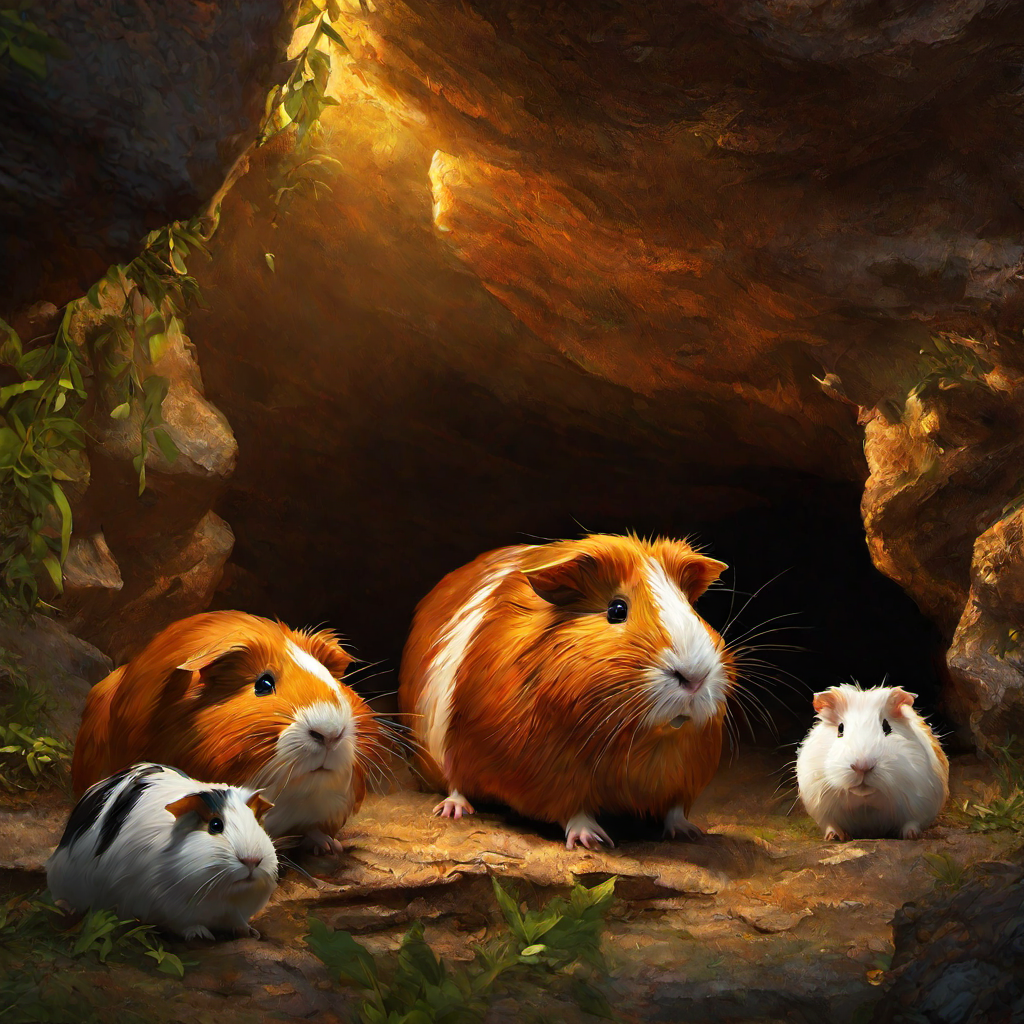The guinea pig, an adorable creature bringing joy to so many of us, boasts a fascinating and rich history that dates back hundreds of years. It’s a tale that spans continents, from the Andean region, cutting across the Atlantic to Europe, and eventually worldwide. But where do these cuddly pets really originate from? What is their historical background, and what is their current status? Let’s embark on an enlightening journey of discovery into the world of guinea pigs.
Origin of Guinea Pigs
Often hailed as wonderful pets for children and adults alike, the history of guinea pigs begins in South America, particularly in the high Andes mountains region. This area includes parts of modern-day Colombia, Ecuador, Peru, Bolivia, and Argentina. The species found naturally in the Andean region are Cavia tschudii and Cavia aperea, from which the domestic guinea pig (Cavia porcellus) descends.
Archaeological evidence in the form of bones and statues indicates the domestication of guinea pigs by Andean cultures occurred around 5000–2000 BC. Guinea pig husbandry was popular in the Incan Empire, and the animals played significant roles in the spiritual and everyday lives of various pre-Columbian Andean civilizations. Their value, however, was much different from what we see today.
History and Exploitation
In the traditional Andean cultures, Guinea pigs were not merely pets but were kept for their meat, considered a delicacy and served during special occasions. Guinea pigs were also involved in ancient healing rituals and ceremonies as sacrifices or for divination purposes.
Spanish explorers in the 16th Century AD encountered these curious creatures during their South American expeditions. Intrigued, they transported them back to Europe. Here, the guinea pig’s status transitioned from a source of food to an exotic pet for the nobility. This shift marked the guinea pig’s first foray into the global stage, paving the way for their journey into ordinary homes around the world.
Their scientific significance emerged in the 19th century when they were increasingly used in biological and medical studies because of their fast reproduction cycle and genetic similarities to humans. Their “guinea” moniker has been thought to originate from the Guinea region in Africa, referencing their role in the Guinea trade, or from the Guinea coin once used to purchase them.
Current Status
Fast forward to the present day, and guinea pigs have firmly cemented their status as beloved pet animals, with millions of families worldwide cherishing them. According to the American Pet Products Association, approximately 1.1% of American households, or 1.3 million households, owned guinea pigs in 2019-2020. Breeds recognized today include the Abyssinian, American, Peruvian, and Teddy, among others, each with unique characteristics like hair type and personality traits.
Several communities in their native Andean region still honour the tradition of guinea pig husbandry for meat, but their importance in religious and healing rites has significantly diminished. As for scientific use, it has declined due to the development of more sophisticated and human-like models. Nevertheless, the term “guinea pig” remains a synonym for test subjects, adamantly persisting in our everyday language.
Conversely, the popularity of these sociable, interactive, easy-to-care-for rodents as family pets continues to rise. As pets, they have been known for their ability to form strong bonds with their human owners, exhibit their unique personalities, that require carefully managed spaces with room to roam.
Whether you’re thinking about getting a guinea pig as a pet or simply fascinated by their intriguing history, one thing remains clear: these adorable creatures harbour an astonishing cultural and biological legacy that spans centuries and continents. With their irresistible charm and intriguing backstory, it’s easy to see why guinea pigs have captured hearts worldwide. Ending on that note, long live our wheeking friends.
Ecoshred Bed loves supporting our community to keep their Piggies Houses as close to natural as possible, whilst protecting their environment and long term longevity by recycling! We Can’t do this without your support so please check out our products before you go.

